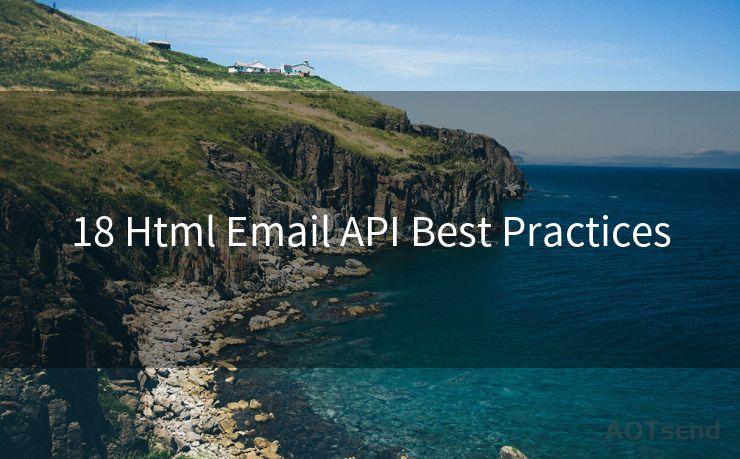18 Html Email API Best Practices




1. Introduction
In the digital age, HTML emails have become a staple of online marketing and customer communication. However, creating and sending HTML emails via API requires adherence to certain best practices to ensure deliverability, readability, and user engagement. In this article, we'll explore 18 best practices for using HTML Email APIs.
2. Choose the Right Email API Provider
Selecting a reliable email API provider is crucial. Look for providers with high deliverability rates, excellent customer support, and advanced features like personalization and analytics.
3. Understand Email Clients and Rendering
Different email clients (e.g., Gmail, Outlook) render HTML differently. Test your emails across multiple clients to ensure consistency.
4. Keep It Simple
Avoid complex HTML structures and stick to basic tags. This ensures better compatibility and faster loading times.
5. Inline CSS
Most email clients don't support external or embedded CSS. Use inline styles for best results.
6. Optimize Images
Compress and resize images to reduce loading times. Consider using web-friendly formats like JPEG or PNG.
7. Alt Text for Images
Always include alt text for images. This not only helps with accessibility but also ensures that recipients can understand the email content even if images are blocked.
8. Responsive Design
With the rise of mobile devices, responsive design is essential. Use media queries and fluid layouts to ensure your emails look great on any screen size.
9. Call to Action (CTA)
Include a prominent CTA button or link. Make sure it's easy to find and click, especially on mobile devices.
10. Unsubscribe Option
Provide an unsubscribe link in every email. This is not only a legal requirement in many countries but also helps maintain a healthy email list.
11. Test, Test, Test
Regularly test your emails for deliverability, readability, and click-through rates. Use A/B testing to optimize your content and layout.
12. Personalization
Utilize the power of personalization by inserting the recipient's name, location, or other relevant data into the email content.
13. Subject Line
Craft compelling subject lines that are both informative and intriguing to increase open rates.
14. Preview Text
Optimize the preview text (the short summary that appears below the subject line in most email clients) to give recipients a taste of what's inside.
15. List Segmentation
Segment your email list based on user interests, demographics, or behavior to send more targeted and relevant emails.

16. Avoid Spam Filters
Familiarize yourself with common spam trigger words and avoid using them in your subject lines or content.
17. Monitor and Adjust
Regularly monitor your email metrics (opens, clicks, bounces, etc.) and adjust your strategy accordingly.
18. Follow Legal Requirements
Ensure your emails comply with anti-spam laws like CAN-SPAM in the US or CASL in Canada.
Conclusion
By following these 18 best practices, you can significantly improve the effectiveness of your HTML emails sent via API. Remember, the key to successful email marketing lies in delivering relevant, engaging content that respects the recipient's time and inbox space.




🔔🔔🔔
【AOTsend Email API】:AOTsend is a Managed Email Service for sending transactional emails. Support Email Types: reminders, authentication, confirmations, notifications, verification codes, invoices, password resets, account activations, billing statements, two-factor authentication (2FA), and one-time passwords (OTP) emails, etc. $0.28 per 1000 Emails. 99% Delivery, 98% Inbox Rate.
You might be interested in:
Why did we start the AOTsend project, Brand Story?
What is a Managed Email API, How it Works?
Best 25+ Email Marketing Platforms (Authority,Keywords&Traffic Comparison)
Best 24+ Email Marketing Service (Price, Pros&Cons Comparison)
Email APIs vs SMTP: How they Works, Any Difference?
Scan the QR code to access on your mobile device.
Copyright notice: This article is published by AotSend. Reproduction requires attribution.
Article Link:https://www.mailwot.com/p3244.html



